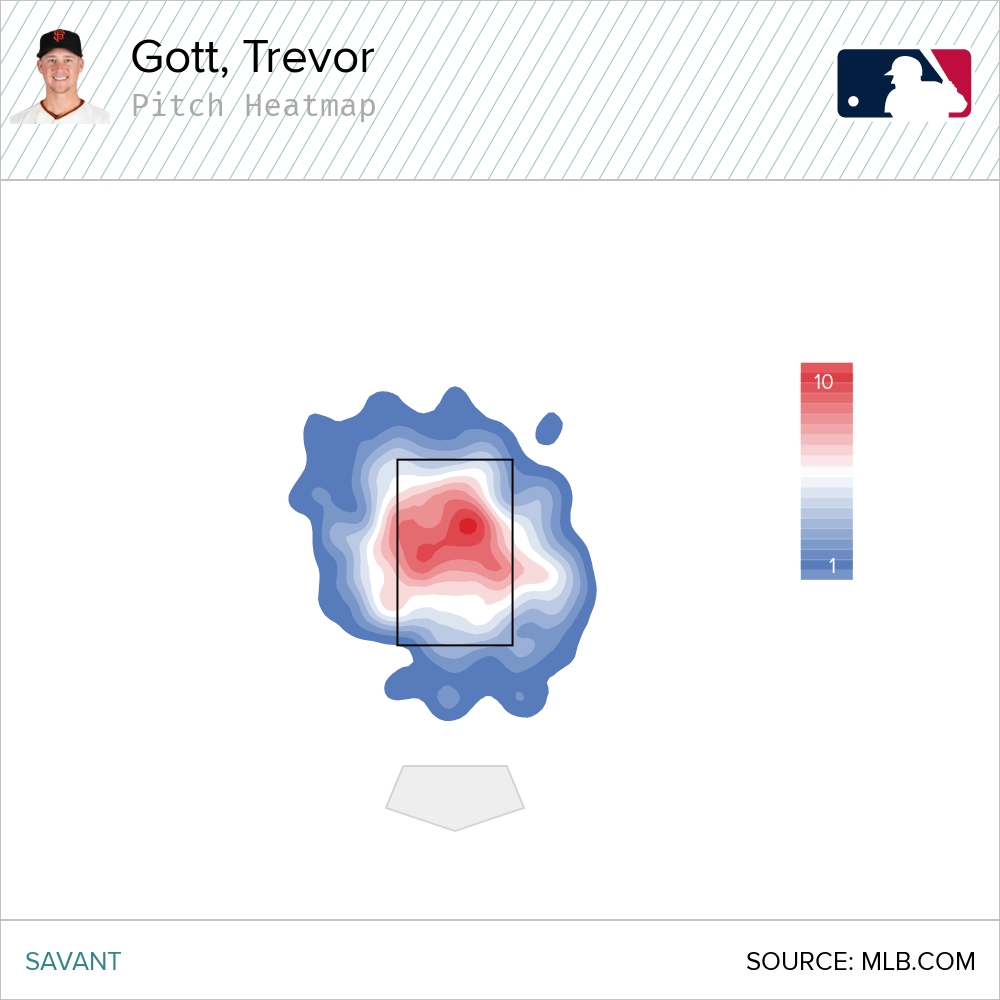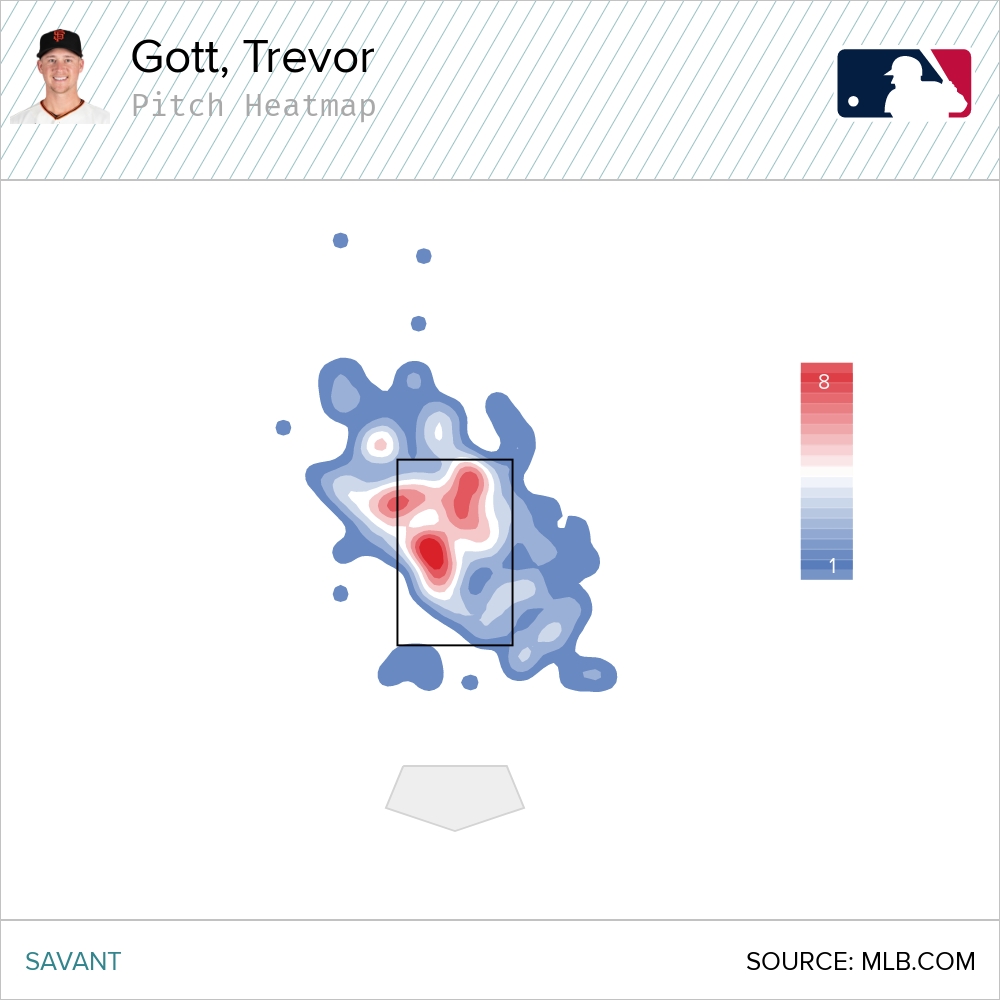The San Francisco Giants designated veteran reliever Trevor Gott for assignment on Tuesday afternoon. This marked the second time in 2021 that Gott has gotten the boot from San Francisco’s 40-man roster. They previously outrighted him to Triple-A back in February. The Giants selected him to rejoin the big-league team on Monday, but his return wound up lasting under 24 hours due to the return of Jake McGee from the injured list. Interestingly, every other team passed on Gott earlier in the year. This time around, they should be putting him on their radar.
Signs of Promise
In February 2019, the Giants acquired Gott from the Washington Nationals in exchange for cash considerations. He spent a brief amount of time on the injured list with forearm soreness at the end of May, but otherwise put together a solid season as a key member of San Francisco’s bullpen. In 52 2/3 innings, Gott posted a pedestrian 4.44 ERA, but many of his peripherals were much more encouraging: a 3.12 FIP, 3.73 SIERA, and 79 DRA-. The then-26-year-old punched out 26.6% of hitters, the highest mark of his career.
The uptick in strikeouts was thanks to a new approach. During his intermittent stints on the Nationals big-league roster, Gott leaned primarily on a sinker. After joining the Giants, he more or less dumped that pitch in favor of a four-seam fastball thrown up in the zone.


Was Gott an elite high-leverage reliever? No. However, he was a useful and controllable arm with potential to continue improving. Unfortunately, everything would come crashing down in 2020.
A Lost 2020
A reoccurrence of arm issues brought a rather abrupt end to Gott’s promising 2019. After posting a solid 3.44 ERA and 2.89 FIP through August 11, he coughed up seven runs in three innings, and the Giants placed on the injured list with a right elbow strain that ultimately ended his season.
Nonetheless, Gott entered the 2020 season expected to get important outs late in games for the Giants, and he began the year as their closer. He converted his first four save opportunities, allowing just one run in six innings, but there were some early red flags. Gott issued as many free passes as he did strikeouts (three). He also evaded damage on some considerably hard contact (55.6% hard hit rate, 95.3 MPH average exit velocity, 11.1% barrel rate). It caught up to him quickly in epic fashion. Gott completely imploded and quickly lost his grip on the ninth inning, allowing 12 runs and recording just 17 outs in nine appearances before being shut down with another bout of elbow soreness. Despite entering camp healthy, he found himself designated for assignment less than a week after reporting to spring training.
Gott’s overall line for 2020 was about as ugly as it can get: a 10.03 ERA, 11.93 FIP, and 6.89 SIERA. His strikeout and walk rates were both 14%, and he coughed up an unfathomable seven home runs (5.40 per nine innings). It does not take an extensive deep dive to figure out what went haywire. He struggled with throwing strikes (37.8 Zone%) and getting ahead in counts, and when he did find the zone, it was often right over the middle of the plate instead of near the top of the zone.

The Potential is Still There
While his 2020 was a disaster in many regards, Gott is not yet a complete shell of his former self. His fastball averaged 95.4 MPH, which is the firmest it’s been since his rookie season back in 2015. In induced whiffs at a 24.5% rate in 2019, and that whiff rate did not budge last year. The only real difference was that the 28-year-old was failing to locate his fastball, which resulted in significantly harder contact. If he can return to spotting it better, the pitch can easily regain its effectiveness. While his strikeout rate dropped dramatically, his swinging strike rate was still 9.2%.
While Gott’s fastball will always be the pitch that drives much of his success, his breaking ball could be the difference between a career revival and serving as the last pitcher in a team’s bullpen (or, even worse, getting stuck in the minor leagues). The right-hander’s curveball has never been an especially successful pitch. In 2019, opponents batted .361 with a .391 wOBA against it. Most interestingly, it does not induce many swings and misses. It has never produced a whiff rate above 19.7% in a full season. This is quite surprising because it has the shape of a potentially elite breaking ball. In 2019, Gott’s hook had 4.4 inches of additional drop on average in comparison to curveballs thrown at a similar velocity and with similar extension. That figure remained virtually the same in 2020.
The greatest issue surrounding Gott’s curveball seems to be that he fails to make competitive pitches with it. It either hangs in the strike zone, where it flattens out and becomes hittable, or it already starts outside of the zone even before it breaks, making it an easy pitch to take. On the rare occasions when the right-hander manages to locate it, it is a legitimately nasty pitch.
Gott is out of options, but he is also cheap ($700,000 salary) and has two more years of control beyond the current season. He would certainly qualify as a low-risk acquisition. Gott is presumably healthy and still has his mid-to-upper-90s velocity. A team like the Rays, Brewers, or Padres (who seem to turn a scrap heap reliever into an elite closer on a regular basis) could take the cheap flier on him with the hope of restoring his command and unlocking the untapped potential in that curveball. It is not difficult to envision him helping a big-league bullpen this season. Gott already passed through waivers unclaimed just a few months ago, but that shouldn’t happen this time around. The potential in his arm is still very much present.
Photo by Stephen Hopson/Icon Sportswire | Feature Image by Justin Redler (@reldernitsuj on Twitter)


Must be a relative or something, lol.